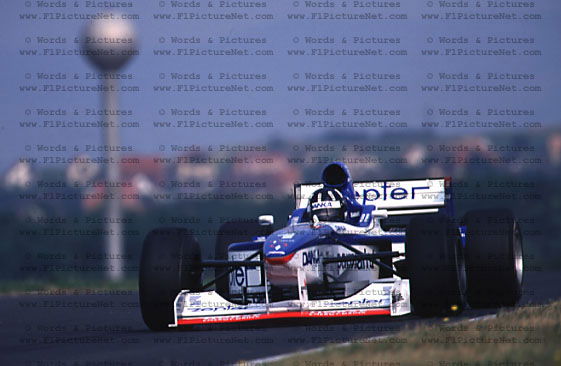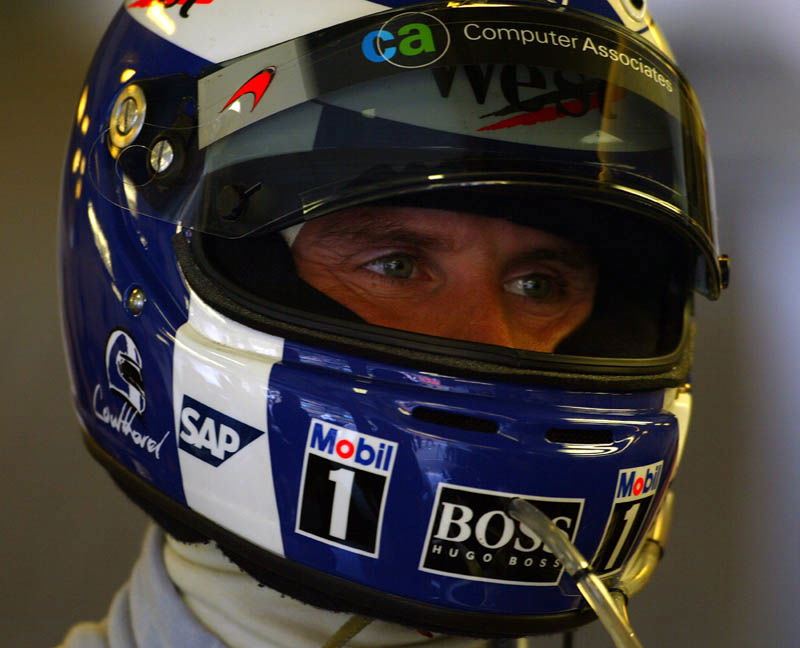Q&A: Nick Hayes - managing director, Cosworth.
Nick Hayes is the Managing Director of Engineering at Cosworth Racing, here he explains all about the new CR-5, why it is the 'highest-revving Cosworth engine ever' and how this will benefit the Jaguar F1 team...
Q:
Nick [Hayes]. What are they key areas in which Jaguar Racing's 2003 engine [the Cosworth Racing CR-5] differs from its 2002 engine [the Cosworth Racing CR-4]?
Nick Hayes is the Managing Director of Engineering at Cosworth Racing, here he explains all about the new CR-5, why it is the 'highest-revving Cosworth engine ever' and how this will benefit the Jaguar F1 team...
Q:
Nick [Hayes]. What are they key areas in which Jaguar Racing's 2003 engine [the Cosworth Racing CR-5] differs from its 2002 engine [the Cosworth Racing CR-4]?
Nick Hayes:
The CR-5 is a completely new design. A fresh sheet of paper. I'd actually say it's the first of a new family of engines - because last year's engine, CR-4, was an evolution of a family which began in 1999. Okay, CR-5 draws on some of the developments we made with the previous family, culminating in CR-4, but it's fundamentally new and fundamentally different.
Q:
How so?
NH:
It's got a 90-degree V angle, for a start - whereas CR-4 had a 72-degree V angle, as has every Cosworth Racing engine ever raced by Jaguar Racing. In fact, every V10 Cosworth Racing has ever raced has had a 72-degree V angle. Some time ago we built an experimental engine that had a 120-degree V angle, but we never actually raced it. It wasn't a publicity stunt, though; it was a totally car-worthy engine.
The reason we've gone to 90 degrees for 2003 is in the interests of improving the centre of gravity (C of G) - and I have to say we've achieved a very significant step for 2003 in terms of lowering the C of G. And not all of that improvement has come about via the wider V angle, either. Rob White [chief engineer, Cosworth Racing] and his team have done a fabulous job - a lot of good, clever design - in repositioning various items in order to help lower the C of G, to be honest. But that's normal; every time we design a new engine, we look very hard at the V angle - because, by and large, the wider you make the V angle, the lower you make the centre of gravity; and the lower you make the centre of gravity, the better you make the car's dynamics.
Q:
So why stop at 90 degrees?
NH:
It's a question of striking the right compromise. If you go wider than 90 degrees, as some F1 teams have done, then you might start to have trouble with packaging stuff underneath the cylinder heads. And you might encounter structural problems, too. So we think 90 degrees is the right compromise.
Q:
Is the Cosworth Racing CR-5 a high-revving unit? Some rival engine builders [eg. BMW] were claiming 19,000 rpm by the end of the 2002 season...
NH:
Well, I'm not going to quote precise figures for CR-5, but I can tell you that it's the highest-revving engine Cosworth Racing has ever built. High rpm is a good thing for the simple reason that it gives you more bangs per minute - which in turn provides more power; more top-end power, that is. But, again, it's a question of compromise - because sky-high rpm figures can have a detrimental effect on reliability. There are mechanical limits to components like pistons and connecting rods, too; there's a limit to how fast they can be made to function reliably. And there might be problems with combustion. Valve gear, too. So, as I say, it's a compromise.
Q:
In terms of the BHP figures you've seen on the dyno, are you happy with the power that the Cosworth Racing CR-5 is producing?
NH:
Yes, it's a significant forward step. Often, when you design and build an all-new engine, you start the new season a little behind the level at which your old engine finished the previous season. Your target is parity. Again, I'm not going to quote precise figures, but CR-5 is already significantly ahead of CR-4.
Q:
And presumably it's light and smaller, too?
NH:
I'm not sure if it's smaller in terms of the volume it occupies in the monocoque, but it's certainly lighter outright - and, as I say, it's C of G is significantly better, too. In fact, it's the biggest step in terms of C of G that Cosworth Racing has ever made.
Q:
And how will Jaguar Racing's new management structure affect Cosworth Racing?
NH:
Well, we think it's a very positive move - it's pretty clear that the integration between the three elements of Premier Performance Division [Jaguar Racing, Cosworth Racing and Pi Research] has never been better. But it won't actually affect the way we do things at Cosworth Racing that much, to be honest, because the people at the top of Jaguar Racing's new management structure [Tony Purnell and David Pitchforth] are the people with whom we've had most dealings with all along.

